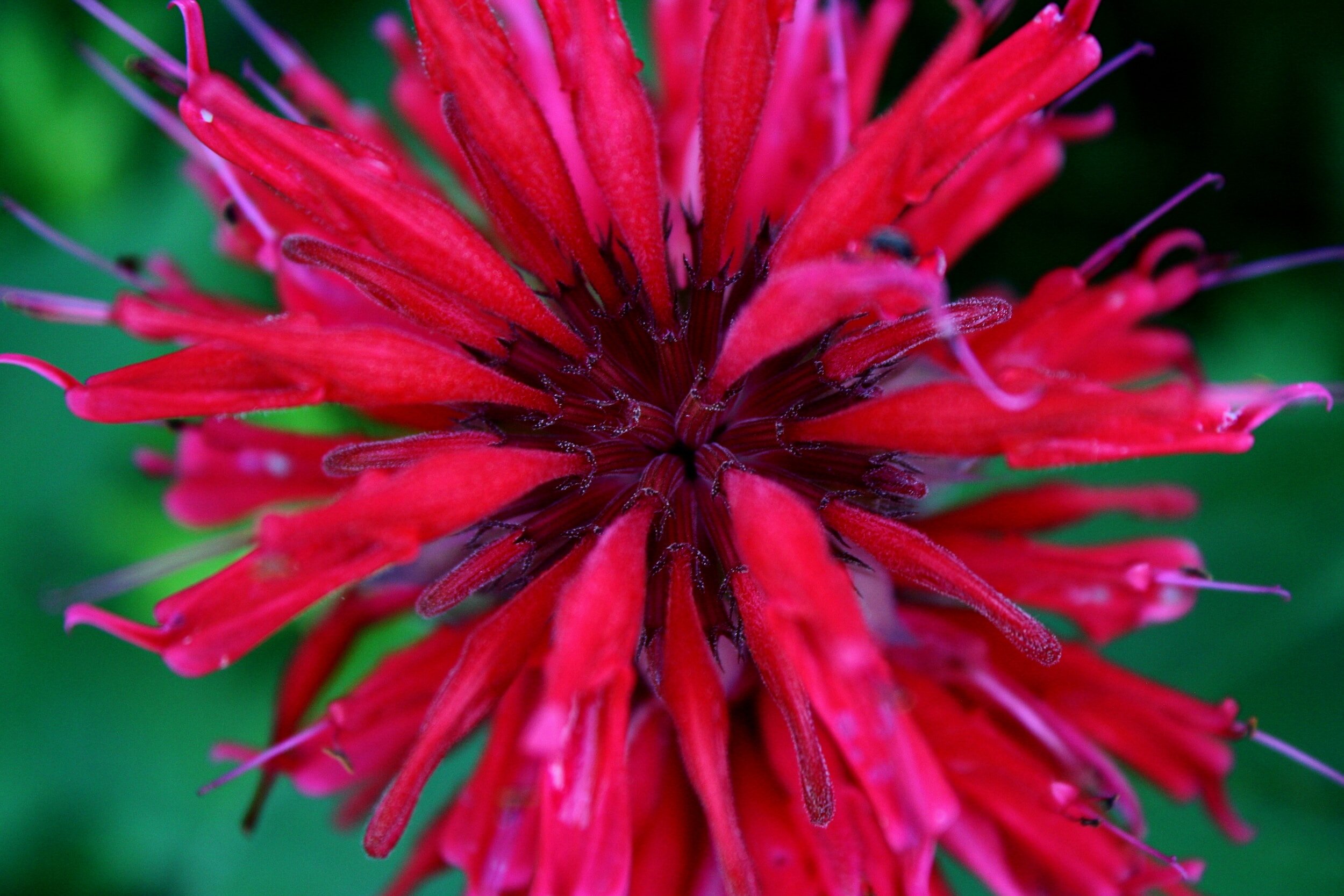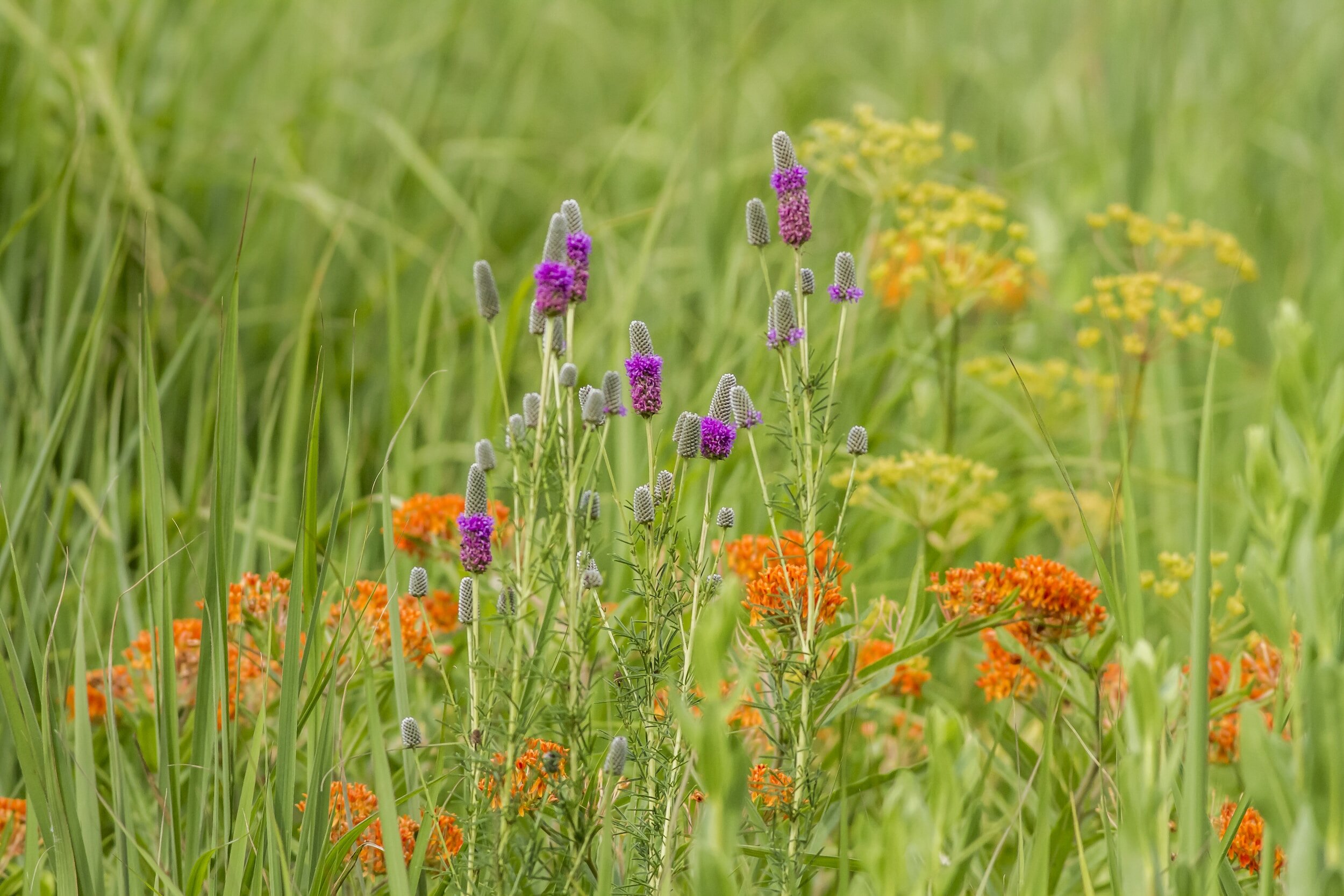Why Should You Plant Native Plants In Your Garden?
Native plants are unsung heroes in the symphony of nature, harmonizing with the land's rhythm. While exotic plants may flaunt vibrant allure, local blooms bring something irreplaceable to the garden table. But you don’t need to take my word for it - this blog post is all about the importance of planting native plants in your garden.
What Is A Native Plant?
Native plants are plants that are naturalized to the area in which they are growing. They originated from the place they are growing, so are well adapted to the climate and generally work in synchronicity with the natural ecosystem of that area. Many non-native plants have been imported to other parts of the world with dire consequences to the native plant populations, as they possess characteristics that make it easy for them to crowd out the native plants or otherwise make the environment unsuitable for the growth of the native plants that were there first.
Why Are Native Plants Better Than Non-Native Plants?
Native plants have evolved to withstand local climate challenges. They are like wise elders we can turn to for advice, intimately interconnected in deep understanding with the land's idiosyncrasies. Native plants are a practical addition to your garden design - uniquely formed to adapt to your region's exact pest pressures and weather conditions, they are more resilient than exotic options and can withstand the stresses of your ecosystem more easily because they have co-evolved with native flora and fauna.
Native Plants Conserve Water
Because the root systems and water uptake of native plants has evolved in tandem with the climate in which they grow, less irrigation is needed for them to thrive because they are already used to the amount of water that the soil naturally receives from rainwater. This reduced water consumption can contribute to water conservation and the garden's overall sustainability.
Native Plants Are Low Maintenance
Since native plants are adapted for the soil they grow in, they are pretty laid back plants to grow especially once established. This means you can spend less time and money fertilizing and fighting off pests with constant interventions. If you’ve ever said you just don’t have a green thumb in the past, I can almost guarantee that you’ll have better luck if you try growing native plants instead - with less effort on your part.
Native Plants Are An Important Cultural Touchstone
Native plants are storytellers, weaving tales of a region's history, traditions, and cultural richness. Nurturing plants with cultural significance can help you form deeper relationships with the plants in your area and connect with nature.
How Do You Know If A Plant Is Native To Your Area?
There are a few ways to figure out if a plant is native. One option is to check with local botanical gardens, nurseries, or agricultural extension offices—they often have information about native plants in your area. Field guides specific to your region can also be handy. Online databases or apps designed for identifying local flora can be a quick and convenient resource. Plus, if you have any green-thumbed friends or neighbors, they might have some insights.
What Is The Role Of Native Plants In Supporting Biodiversity?
Native plants play a crucial role in supporting biodiversity for several reasons. First off, they provide habitat and food sources for local wildlife, including insects, birds, and mammals. Many native insects, for instance, have evolved to depend on specific native plants for survival. This forms the basis of the food chain, as birds and other animals rely on insects and other invertebrates for sustenance.
Native plants also contribute to ecosystem stability. Their root systems help prevent soil erosion, and they are adapted to local climate conditions, making them more resilient in the face of environmental changes. Additionally, native plants often have complex relationships with other organisms, such as fungi and bacteria in the soil, creating a healthier and more balanced ecosystem.
When non-native plants are introduced, they can sometimes outcompete native species, leading to a decline in biodiversity. Invasive species may not provide the same level of support for local wildlife, disrupting ecological relationships that have developed over time.
In short, native plants are like the backbone of an ecosystem, providing the essential elements that support a diverse and thriving community of organisms.
What is Native Plants Role in Habitat Creation?
Native plants offer a source of food for local wildlife. They attract insects, birds, and other animals with nectar, fruits, seeds, and foliage. This creates a natural food web where different species rely on each other for sustenance.
The structure of native plants provides shelter and nesting sites for various creatures. Tall grasses, shrubs, and trees create hiding spots and safe havens for birds, mammals, and insects. This is especially important for breeding and raising offspring.
Many native plants have evolved alongside local pollinators. Bees, butterflies, and other insects rely on the nectar and pollen of these plants. By supporting pollinators, native plants indirectly contribute to the reproduction of other plants, including food crops.
How Do Native Plants Attract Native Wildlife?
Native plants have evolved alongside local wildlife, forming intricate relationships that benefit both the plants and the animals. Many native plants produce nectar, a sweet liquid that attracts pollinators like bees, butterflies, and hummingbirds. Pollinators feed on the nectar and, in the process, transfer pollen from one flower to another, facilitating the plants' reproduction.
Native plants often produce fruits and seeds that are attractive to various animals. Birds, mammals, and even insects may feed on these fruits, helping in seed dispersal. Some seeds may even be adapted to survive passage through the digestive systems of certain animals.
Native plants are often the hosts for specific insect species. For example, monarch butterflies lay their eggs exclusively on milkweed plants. By providing a suitable environment for these insects, native plants support the entire food web, as insects are a crucial food source for many other animals.
The coloration and patterns of native plants often provide camouflage for animals. Insects may mimic the appearance of leaves or flowers, while birds and mammals use the vegetation for cover, protecting them from predators.
Native plants may bloom or produce fruits at specific times of the year, aligning with the seasonal needs of local wildlife. This creates a consistent and reliable food source for animals throughout the year.
What Are Some Challenges Faced by Native Plants?
Native plants face several challenges, many of which are a result of human activities and environmental changes. Urbanization, agriculture, and infrastructure development often lead to the loss and fragmentation of natural habitats. This reduces the available space for native plants to thrive and disrupts ecosystems. The introduction of non-native, invasive plant species can outcompete native plants for resources such as sunlight, water, and nutrients. Invasive species may lack natural predators or diseases, allowing them to spread rapidly and displace native flora.
Changes in climate patterns, including temperature increases and altered precipitation patterns, can affect the distribution and growth of native plants. Some species may struggle to adapt to these changes, impacting their survival and reproduction. Air and water pollution, including pollutants from industrial activities and agriculture, can negatively affect native plants. Pollution can alter soil composition, disrupt nutrient cycles, and directly harm plant health.
Native plants can be susceptible to diseases, and the introduction of new pathogens or the spread of existing ones can pose a significant threat. This is particularly relevant in a globalized world where pathogens can be transported across regions. In some ecosystems, fire plays a natural role in maintaining plant diversity. Changes in fire frequency or intensity, often influenced by human activities, can disrupt the balance and negatively impact native plant communities.
Addressing these challenges requires a combination of conservation efforts, sustainable land management practices, and public awareness. Protecting and restoring native plant populations is crucial not only for the plants themselves but for the entire ecosystems they support.
Popular Native Plants In The USA
The United States is home to a diverse range of ecosystems, and each region has its own set of popular native plants. Here are some examples from various regions:
Eastern Redbud (Cercis canadensis): Found in the eastern and central United States, this small deciduous tree is known for its stunning pink or purple flowers in early spring.
Bluebonnet (Lupinus spp.): The Bluebonnet is the state flower of Texas and is part of the lupine genus. These vibrant blue flowers are a common sight in the spring in Texas.
California Poppy (Eschscholzia californica): The California Poppy is the state flower of California and is known for its golden-orange blooms. It thrives in the dry, open landscapes of California.
Black-Eyed Susan (Rudbeckia hirta): Native to the eastern and central United States, Black-Eyed Susans are yellow daisy-like flowers that bloom throughout the summer and are a favorite in gardens.
Milkweed (Asclepias spp.): Milkweed is crucial for the survival of monarch butterflies, as it serves as the sole host plant for their larvae. Various species of milkweed are found throughout the country.
Loblolly Pine (Pinus taeda): A common pine tree in the southeastern United States, the Loblolly Pine is an important timber species and provides habitat for numerous wildlife species.
Sagebrush (Artemisia tridentata): Found in arid regions of the western United States, sagebrush is a hardy shrub that plays a vital role in providing habitat for a variety of wildlife.
Goldenrod (Solidago spp.): Goldenrod is a late-summer bloomer found in meadows and along roadsides across the country. It's known for its bright yellow flower clusters.
Bald Cypress (Taxodium distichum): Native to the southeastern United States, the Bald Cypress is a deciduous conifer known for its distinctive "knees" that protrude from the water in swampy areas.
Wild Bergamot (Monarda fistulosa): Also known as Bee Balm, this native plant with pink to lavender flowers is found in prairies and open woods. It attracts bees, butterflies, and hummingbirds.
These are just a few examples, and the diversity of native plants in the U.S. is vast. Local nurseries, botanical gardens, and native plant societies are excellent resources for learning more about and obtaining native plants for your specific region.



